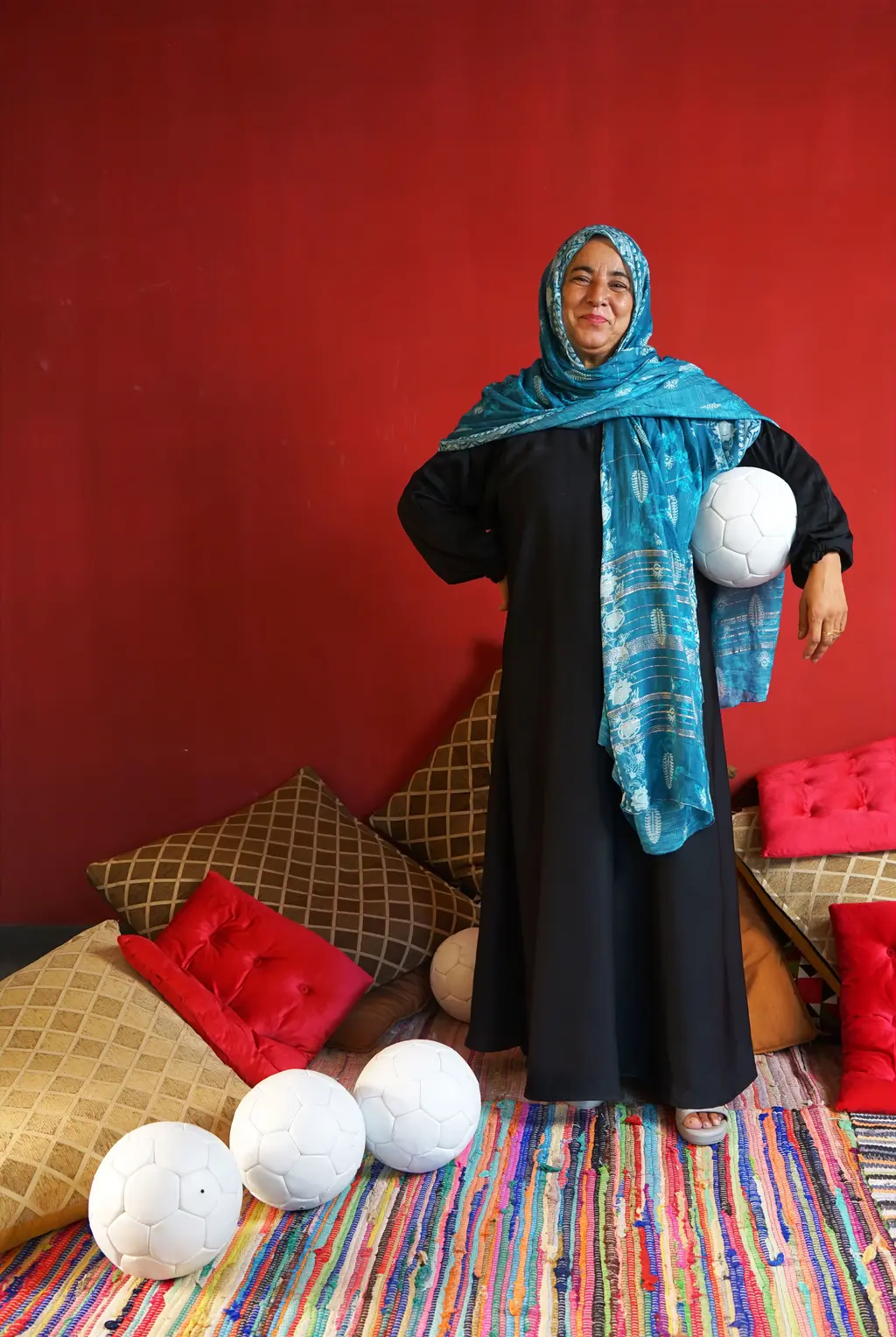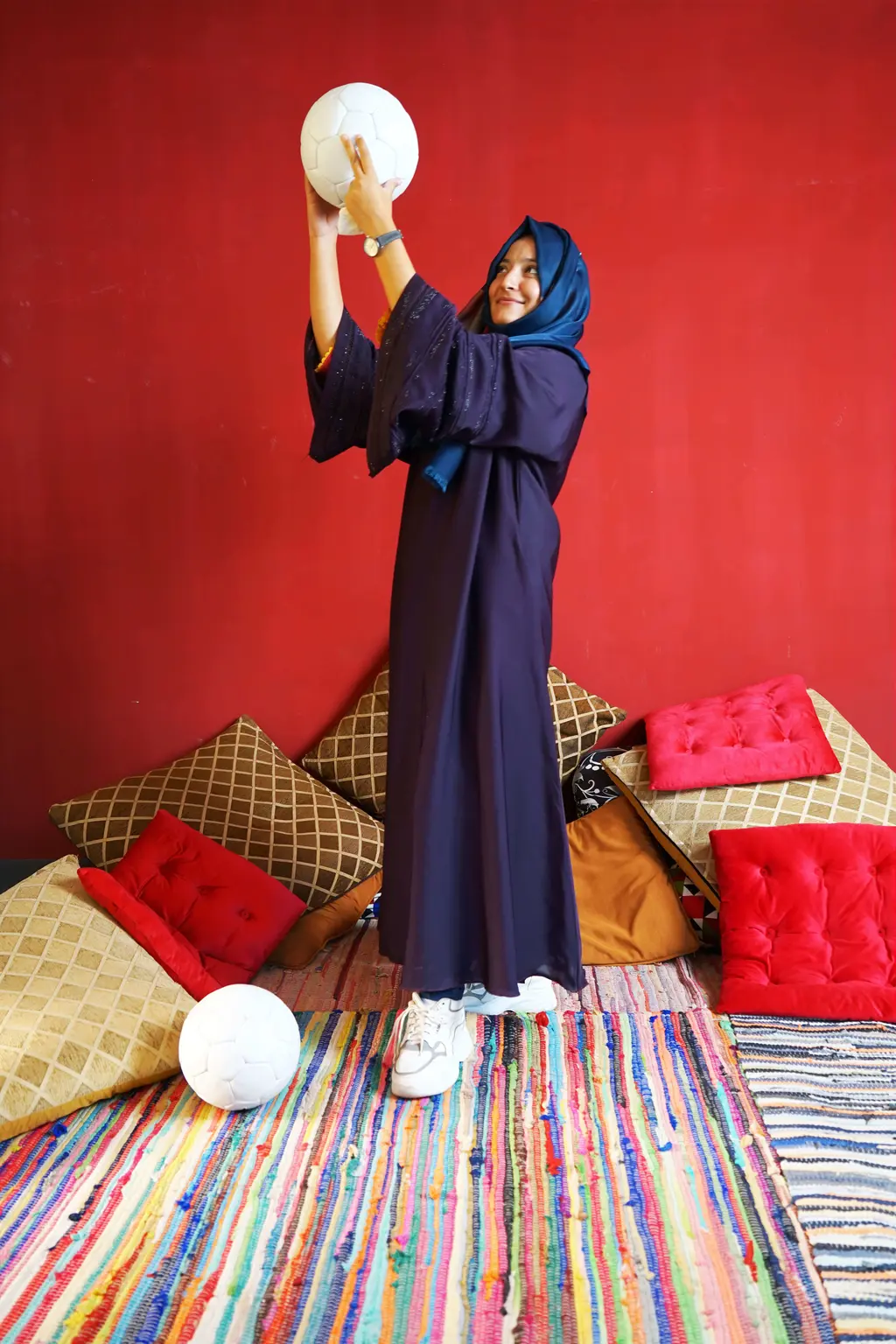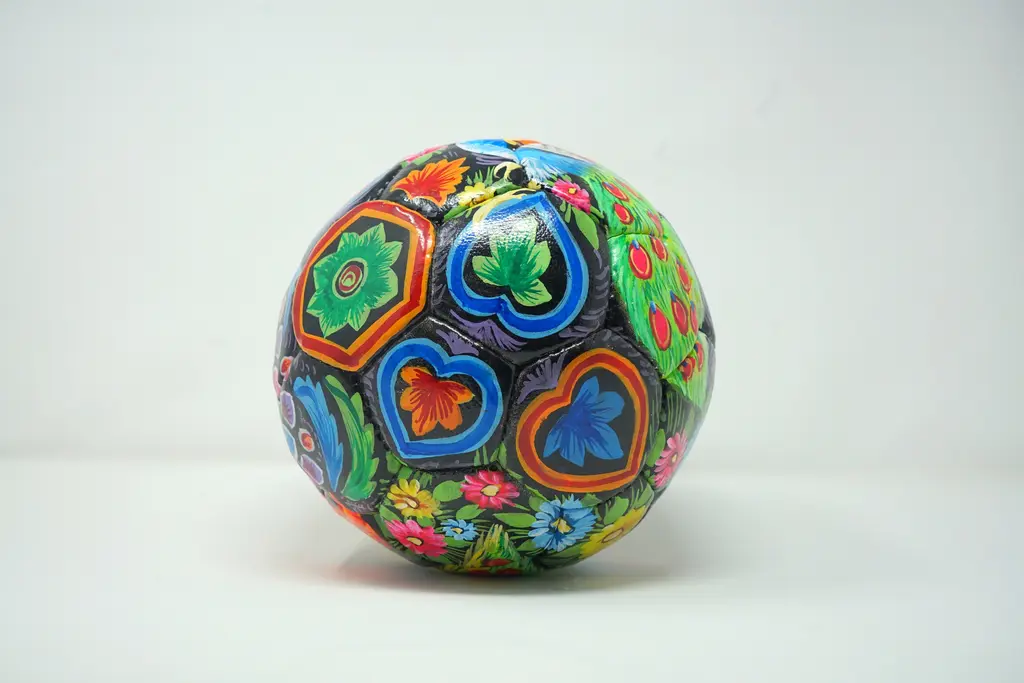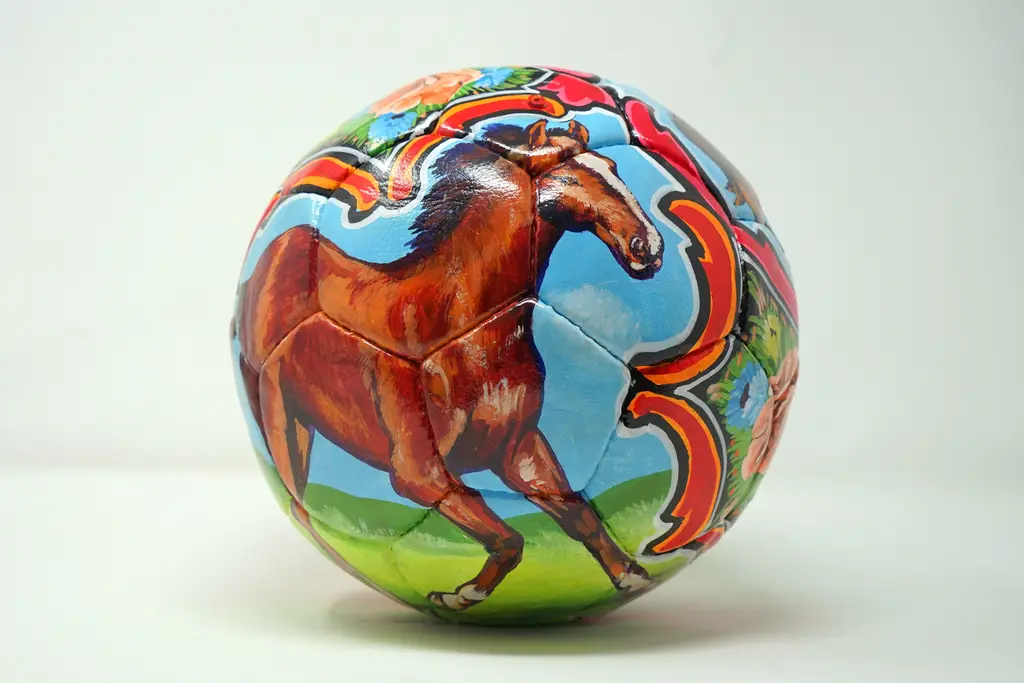The real football factory: the South Asian connection to English football

Much of artist Jamie Holman’s work examines working class and football culture. Now he wants to challenge certain aspects with new pieces made in Pakistan.
Culture
Words: Tiffany Lai
Here’s a fact that may surprise you: almost 70 per cent of the world’s footballs are made in Pakistan. It certainly surprised Jamie Holman, a Blackburn-based artist whose work focuses on the intersection of class, cultural memory and Britishness.
So you could also say that Jamie is a surprising choice for a residency organised by Art of Small Talk, a collaborative community arts organisation in Islamabad, the Pakistani capital. But his work – be it his ceramic truncheons that critique the mundanity of British police violence, or his great union banners that join the dots between 18th century industry and the rave scene – has a willingness to think critically about our culture and sit with complicated stories, whatever their origins. Then there’s his diehard love of football, notably of Blackburn Rovers FC. And, finally, there’s his passion for the people that make up his hometown.
Though 2024 marked the first time Jamie, 51, had been to Pakistan, on a residency co-organised by East Lancashire-based In-Situ, elements of the country’s culture are an intrinsic part of his life. He was born in Scotland but raised in Blackburn, where 30 per cent of the town’s population comprises its South Asian, mostly Pakistani, community.
But even as a kid, Jamie was aware of a cultural disconnect. He remembers Rovers matches with the stands at Ewood Park full of South Asian fans, yet on the pitch there were none to be seen. “When I was playing Sunday schoolboy football, the teams were really mixed,” he says. “[But] this never translated into a local or national professional profile.” Ever one to prod, Jamie began to research the history of East Lancashire’s South Asian population in more recent years and found a long yet forgotten history of footballers.

Photo assistant Zara Saghir

“The [cotton] mills always had teams,” he says of the area’s key historical employers. “There were literally hundreds in the late 1800s and early 1900s. [Then] from the 1960s the mill and Sunday league and teams reflected the changing workforces. And South Asian migration kept the textile and paper industry alive a lot longer in Lancashire.” But while some clubs, like Nelson F.C (founded in 1882, they play their football in North West Counties League Division One North), still honour their mill origins by giving opportunities to young Asian players, they remain an outlier, with an absence of players at a professional level.
But what contribution could a local artist make to this disparity of opportunity and visibility?
Enter Mehr Javed, a fellow artist-in-residence, who told Jamie about Pakistan’s football manufacturing industry. The result is four multidisciplinary pieces inspired by Jamie’s time in the country earlier this year: a photoseries of women holding locally produced footballs; a collection of floridly colourful footballs; a painting depicting a re-arranged image from August’s anti-immigration protests; and a short film titled Tu Hai Kaun? (“Who are ya?” in Urdu).
“The timing of the project feels really prescient,” says Jamie, reflecting on summer’s racially motivated violence across British communities. His message to the far right protestors: “Fuck you. You don’t know the heritage of the [English working class] culture that you claim to represent. Hijabi women were there at the beginning, and are still there now – the craft and the participation is clear.”
Though much of Jamie’s work celebrates working class and football culture, the artist says that pieces like the ones he made in Pakistan are important in challenging certain aspects.
“There’s a really interesting piece of research and artwork there for me in terms of how we talk about class and [who’s included in that conversation]. Class is often thought about as a white working class male thing, but the origin point of the culture is shared with hijabi working class women and still is.”



Hi Jamie! You’ve previously talked about nostalgia as a “misunderstanding of the past”. What part did British nostalgia have to play in this project?
Nostalgia is so weaponised by the right at the moment. The portraits [of women posing with the footballs] are important in asking whose cultures and heritage we are talking about.
Tell us more about your day-to-day life at the residency.
I shared a studio with Art of Small Talk [in Islamabad] and, weirdly enough, it was really similar to my own in the UK. I started my day at 9am, like I always do, and I often worked with a Pakistani-British artist called Zara Saghir, who’s also from Lancashire. She makes these great performance and photographic works that contest gender hierarchies in Muslim communities. It was 14-hour days for a month but it was fucking joyful.
How did you first meet the Chira women [the artisans photographed with footballs]?
Zara speaks Pothwari so she helped me set up the [photography series] through a government agency. In exchange for the shoot, the women wanted an AI workshop to help them design a shared space in the village where they would have exclusive access to develop their own businesses. Zara delivered that, and they learned to design the offices on their phones, and then we did the photoshoot. I would have paid them but they wanted a [skill] exchange instead.
What was the process of making the painted footballs?
I had 20 footballs made in Sialkot [in the northeast of Pakistan] then Mehr Javed introduced me to some local artisans that I commissioned to help paint them.
We didn’t speak the same language so I showed the artisans a series of AI prompts on Discord to begin the development of ideas with them. They would then feed back with things like “those colours are wrong, it should be like this” or “we can do that for you”. We tried to get a mixture of truck art vernacular [a South Asian tradition of painting trucks in bright patterns and calligraphy] and illuminated scroll vernacular, a heritage [visual] language from the late 1800s.
Your previous work looked at police brutality. What is the connection between that project and this one?
It’s to do with the hierarchy of culture. There’s a proposition that working class communities are often not participating in art and culture, and a lot of the work that I do is about contesting that.
There are also often elements of resistance in these cultures which become really important in terms of constructing identities or reinforcing identity. What’s important for me about this is that it contests a contemporary identity crisis, which we see in all the Tommy Robinson stuff – this idea that football hooligans are going to protect us. Robinson has gone to prison [for contempt of court after repeating false claims against a Syrian refugee] but there is more of this [out there] – and with that will come more Islamophobia and misappropriation of working class values. I want to disrupt it more than I ever have, and not have these notions of class perpetuated out of ignorance.
Jamie has a solo exhibition opening on February 27th at The Whittaker in Rossendale, Lancashire. These works will feature along with new works commissioned by the gallery






